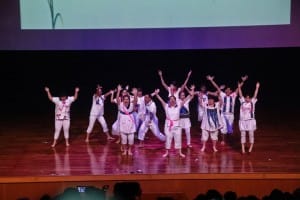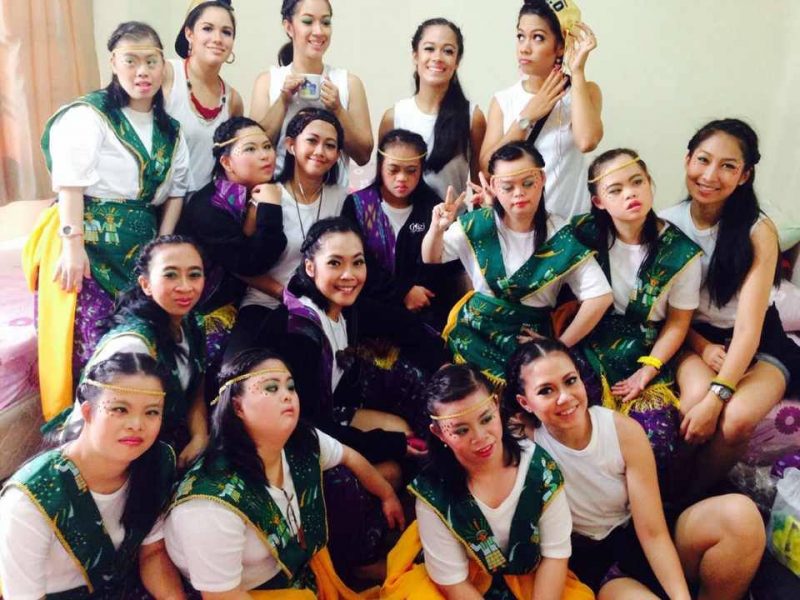Gigi Art of Dance recognizes how dance belongs to anyone, without exception to those with disabilities.
The dance school welcomes students with Down syndrome to show that nothing should get in the way of expressing one’s creativity.
Some people may think that dancing is only for those born with talents of perfectly carrying out a pirouette, split or jeté. Fortunately, such views may not exactly be true. Although it may take serious work to be a professional dancer, expressing one’s self through movements merely relies on his or her drive. As a result, dancing requires no specific ability but willingness.
For Gigi Art of Dance, a dance school opened in 2009 by professional dancer Gianti Giadi, dance belongs to all of us and the goal for self expression can be accomplished by anyone. As a platform for dance enthusiasts, the school offers nearly 30 classes including Broadway Jazz, Contemporary, Hip Hop, Traditional, K-Pop, and even Mum’s Class. The school invites students from different backgrounds, ranging from the ages of two to 45 years. Some even hail from different countries, namely the US and Singapore. Such diversity is further embodied in the fact that Gigi Art of Dance welcomes students with Down syndrome.
Down syndrome is a chromosomal disorder engendered by error in cell division, which in turn generates an extra chromosome 21, also known as Trimony 21. This consequently deteriorates physical and intellectual development, which many believe to be an obstacle when wishing to be involved in the arts.
When Gigi Art of Dance was offered the opportunity of working with a Down syndrome foundation Ikatan Sindroma Down Indonesia, Giadi was eager to collaborate, with a united goal of raising awareness about the disease.
One of the teachers of the Down syndrome class, Karina Syahna (who is also a student at Gigi Art of Dance), admits that her experience of teaching this class is fun yet challenging. “To teach them, you would have to be extra everything: extra patient, extra hyped, make extra efforts in explaining and approaching them, and you also have to think extra [sic] about the choreography because they are not like usual dancers,” Syahna shares.
The students with Down syndrome all have very different dancing skills; some of them find it easier to catch the movements while others have to work harder. Syahna also recounts moments where her students at times do not feel like dancing and instead sit in the corner, cry, scream, or simply do nothing. To handle this kind of situation, she has to directly approach the students and figure out ways to comfort them.
As a teacher, Syahna confesses the need for a deeper understanding to encourage her students to dance. They cannot be forced to do things that they don’t feel comfortable with or are not interested in. The key, according to Syahna, is to keep them in a happy mood so that they will be willing to dance.
For those reasons, choreography for Down syndrome must be carefully thought out with regards to the students’ varying level of abilities. Even after much consideration, the execution does not always follow, and accordingly, adjustments must be quickly made. As Syahna explains, “First, I discuss the choreography with the other teachers. On the field we give them the instructions and then we see if there needs to be adjustments, which of course, there will be.”
But despite shortcomings and the students’ occasional lack of motivation, when it comes to show time, they always manage to deliver their talents. Syahna wonders how regardless of challenges, things normally end up falling into place. “I don’t know why but miracles always happen on the day of the show. Everybody on stage is so focused and united.”


Earlier this year, the students of Ikatan Sindroma Down Indonesia had the chance to perform in Dance Prix, where they appeared on stage without any assistance for the very first time, wearing hero-themed costumes. A year ago the students also joined World Dance Alliance in Singapore, where they were praised by the teachers for doing so well. Most of the time, their performances move the audience and it is not uncommon for them to even shed a tear.
At the end of the day, what matters is the students enjoy their time on stage. Syahna reveals that she could not possibly ask for more if the students have done their best. “You can see that they really work hard and their faces light up on stage,” she said.
The students at Gigi Art of Dance epitomize how everyone, in spite of their own constraints, can find creative ways of expressing themselves. Whether it is through dance or other forms of expression, we should all remember that everybody, including those with disabilities, can find ways to channel their creativity.
For more information about Down syndrome and other classes, please visit www.gigiartofdance.com




